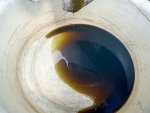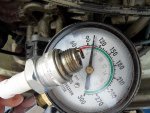Race motors are a totally different beast, they have little in common with a typical outboard, nor are they used and mantained in the same way. And at no time did I say 927 is a "bad" oil, only that it's not the correct one for use in a normal outboard. I was around when 927 first came out, and used it when I was racing motorcycles, it's great in that application.
I was also around when 30W motor oil was used, it was dirty, fouled plugs, smoked, left nasty deposits, didn't do a great job of lubricating, etc. These are the reasons oils were developed just for water cooled outboards, the technology split off from motor oil and air cooled 2 stroke oil.
I hate to re-type all this, but here goes.
Water cooled outboards operate at lower temperatures and lower RPM's than most air cooled motors. The oils that work well at high temps and high RPM's leave ash deposits in lower temp, lower RPM motors (typical outboard). These ash deposits can cause premature failure of the motor. When the ash creating ingredients are removed, the oils don't work as well at high RPM's and higher temps, resulting in bearing failure and piston scuffing, although they do still work well at lower RPM's and lower temps. This is when the technologies split away from each other and each was fine tuned for their intended application and stopped being a generic oil.
So there you have the short story on why there are TCW3 oils and a few of the differences. If you wish to use 30W motor oil in your ETEC that's fine with me.























